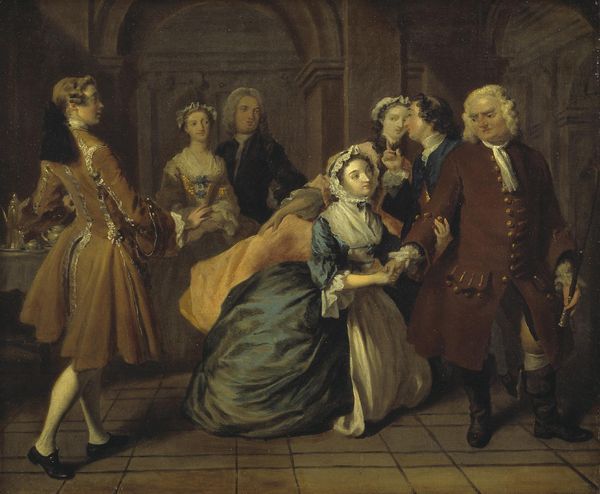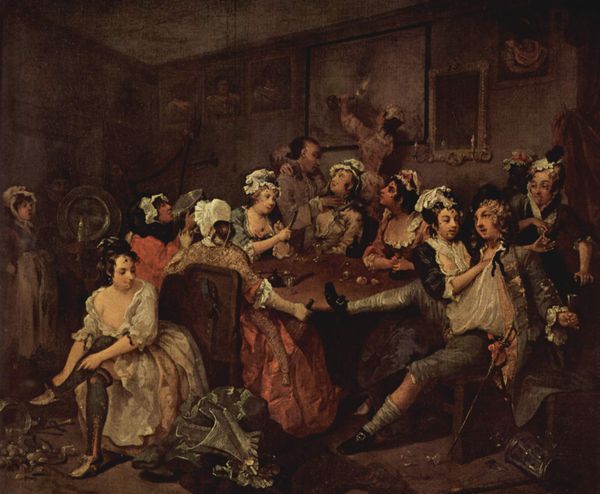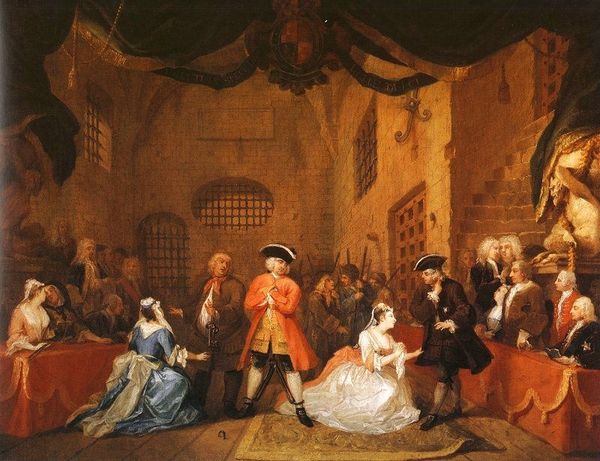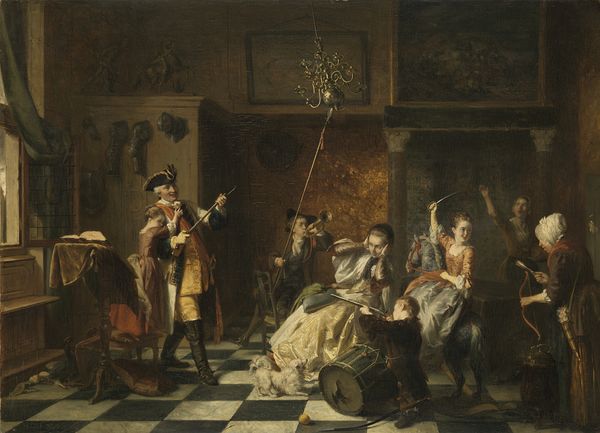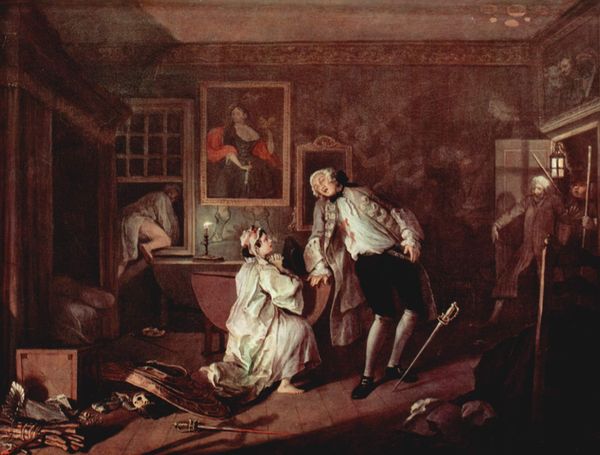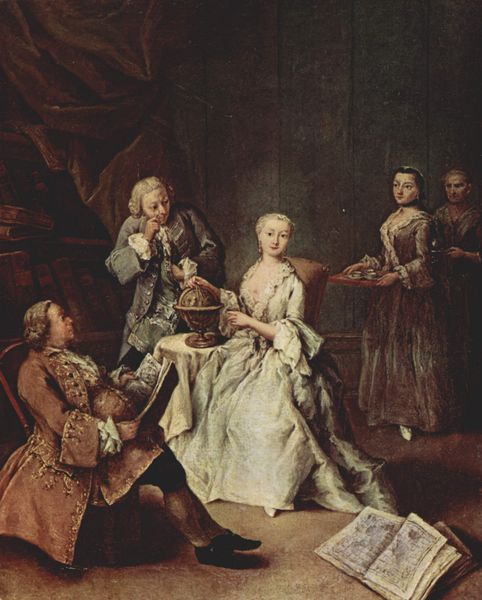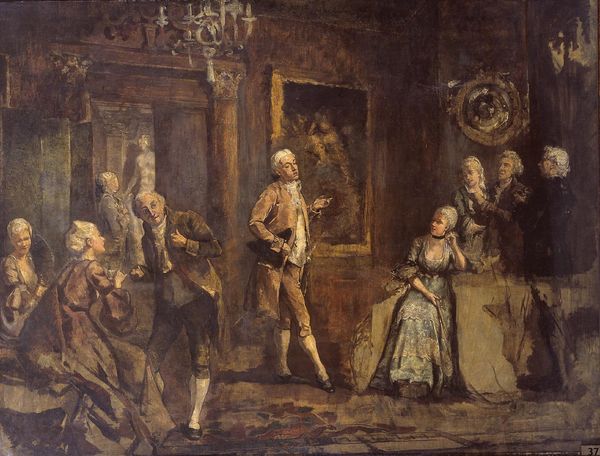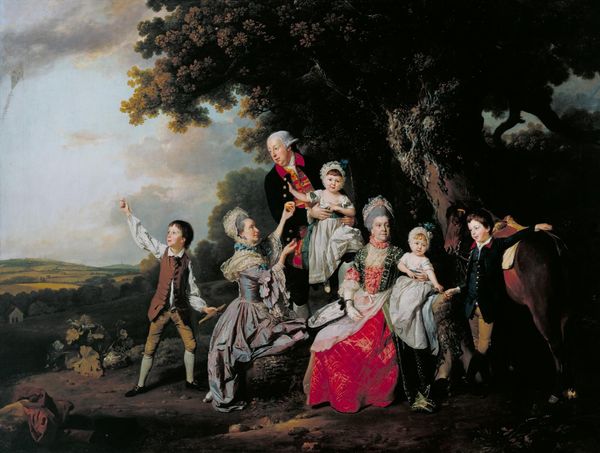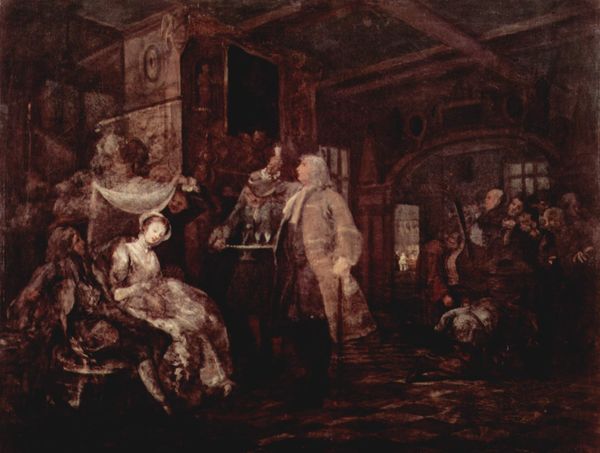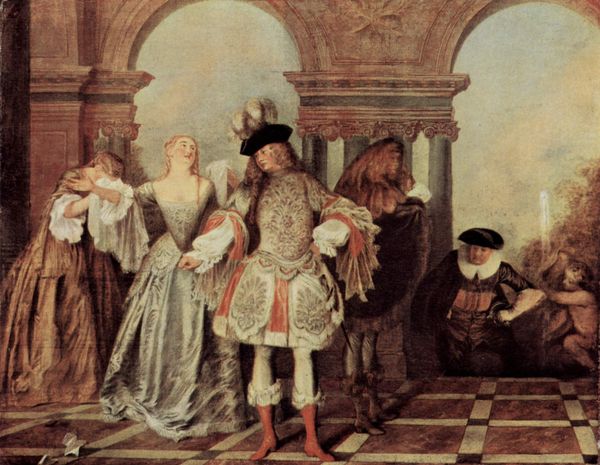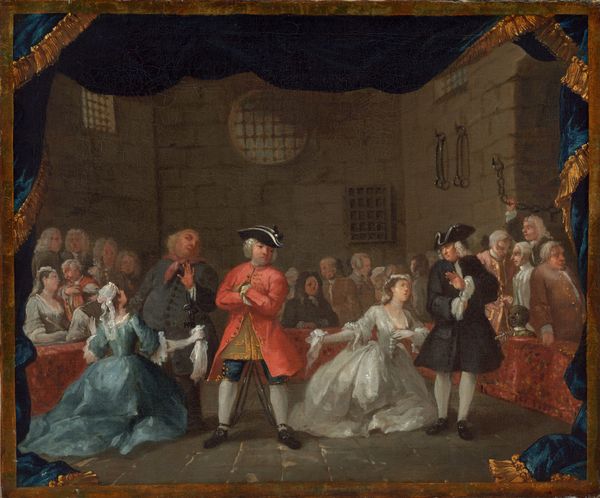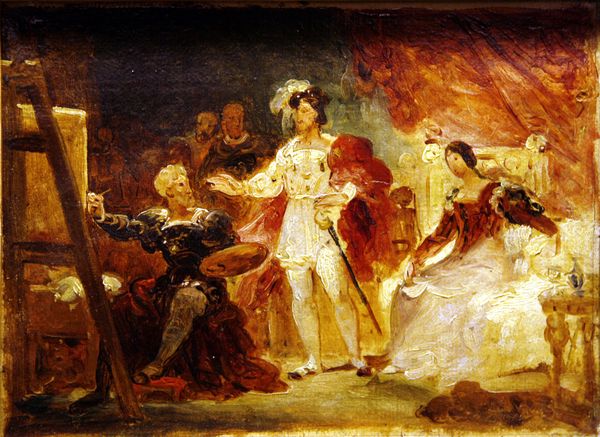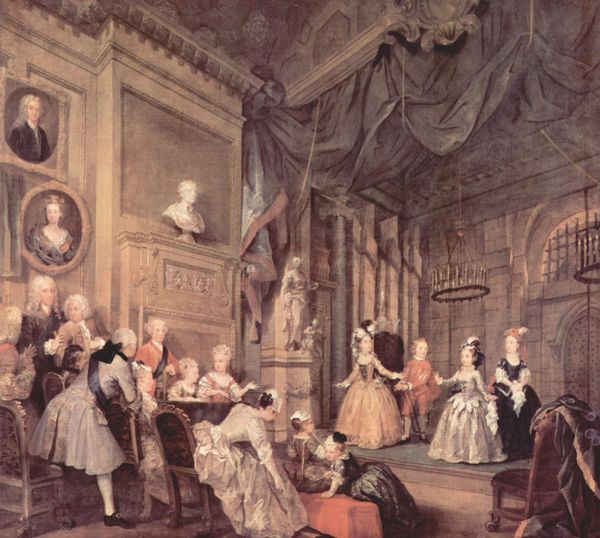
painting, oil-paint
#
portrait
#
allegories
#
allegory
#
narrative-art
#
baroque
#
painting
#
oil-paint
#
genre-painting
#
history-painting
Dimensions: 68.5 x 89 cm
Copyright: Public domain
Curator: Hogarth’s 1745 oil painting, "Visit with the Quack Doctor", currently residing at the National Gallery in London, provides a fascinating snapshot into the social landscape of the 18th century. Editor: It's cramped, isn't it? Visually dense. Like stepping into a rather unsettling puppet show, with expressions ranging from theatrical to just plain queasy. What's your immediate read? Curator: Immediately I’m drawn to how the work serves as both social commentary and narrative art. Hogarth, a master of visual storytelling, satirizes the medical quackery prevalent at the time. He was quite interested in art that served a civic function. Editor: Absolutely! The charlatan's confident demeanor next to the clearly distressed young patient - classic Hogarthian irony. I love that the patient is holding her face; you instantly imagine how painful whatever she’s getting is. You can almost feel it. Curator: Exactly. Notice also the props. The skull, for example, a blatant symbol of mortality used to deceive patients. The interior décor tells us a lot too – a somewhat theatrical space for elaborate performance. We have to remember, healthcare wasn’t regulated the way it is now, so spaces like these were quite popular, even sought after. Editor: Performance is the key word. Look at the quack's assistant – seemingly unaffected. It heightens the sense of unreality, a carefully staged deception. It’s almost absurdly baroque with how it uses that style to build up to something so mundane and unpleasant. Do you think this moralizing works? Curator: Undeniably. By exaggerating the scene, Hogarth offers pointed social critique of fraudulent medical practices but it’s much more nuanced. The social hierarchy present at the time allowed these men to swindle members of society, and by using oil paint, a refined and academic medium, the critique really sticks its landing. Editor: Well said. And, honestly, revisiting this, the color palette keeps pulling me in. That murky tonality... It speaks of something unsettling lurking beneath the surface. Makes you question what kind of societal "cures" we still swallow down today. Curator: Precisely. Hogarth's painting endures because it's not just a historical document but also a timeless reflection on human folly and deceit, presented here with wit and impressive technical skill. Editor: Yes, "Visit with the Quack Doctor" leaves me both amused and unsettled – quite the concoction, and one that certainly sticks with you.
Comments
No comments
Be the first to comment and join the conversation on the ultimate creative platform.
